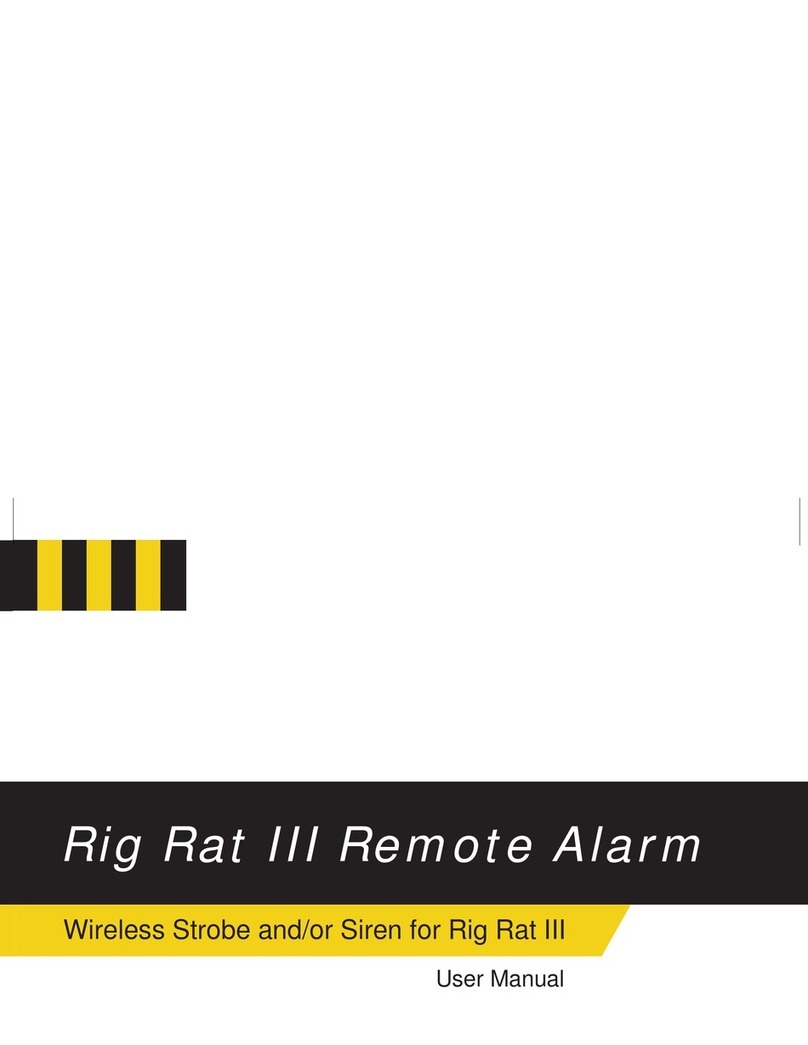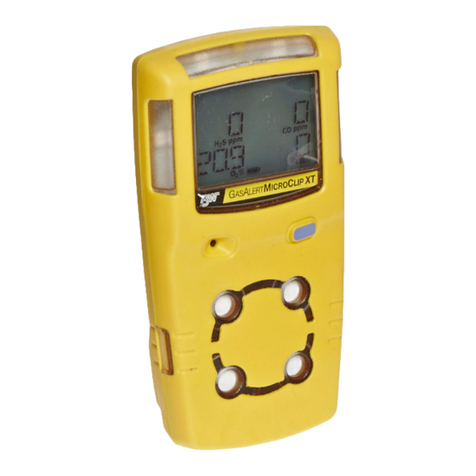GasAlertMicroClip
Operator’s Manual
2
Safety Information - Read First
Use the detector only as specified in this manual and the
reference guide, otherwise the protection provided by the
detector may be impaired. Read the following cautions before
using the detector.
aCautions
•Warning: Substitution of components may impair
Intrinsic Safety.
• Caution For safety reasons, this equipment must be
operated and serviced by qualified personnel only.
Read and understand the user manual completely
before operating or servicing.
• Charge the detector before first time use. BW
recommends the detector be charged after every
workday.
• Before using the detector, refer to Sensor Poisons and
Contaminants.
• Calibrate the detector before first-time use and then on
a regular schedule, depending on use and sensor
exposure to poisons and contaminants. BW
recommends calibrating at least once every 180 days
(6 months).
• The combustible sensor is factory calibrated to 50%
LEL methane. If monitoring a different combustible gas
in the %LEL range, calibrate the sensor using the
appropriate gas.
• Only the combustible gas detection portion of this
instrument has been assessed for performance by
CSA International.
• Calibrate only in a safe area that is free of hazardous
gas and in an atmosphere of 20.9% oxygen.
• It is recommended that the combustible sensor be
checked with a known concentration of calibration gas
after any exposure to contaminants/poisons such as,
sulfur compounds, silicon vapors, halogenated
compounds, etc.
• BW recommends to bump test the sensors before each
day’s use to confirm their ability to respond to gas by
exposing the detector to a gas concentration that
exceeds the alarm setpoints. Manually verify that the
audible and visual alarms are activated. Calibrate if the
readings are not within the specified limits.
• Caution High off-scale readings may indicate an
explosive concentration.
• Any rapid up scaling reading followed by a declining or
erratic reading may indicate a gas concentration
beyond the upper scale limit, which can be hazardous.
• Extended exposure of the GasAlertMicroClip to certain
concentrations of combustible gases and air may stress
a detector element that can seriously affect its





























